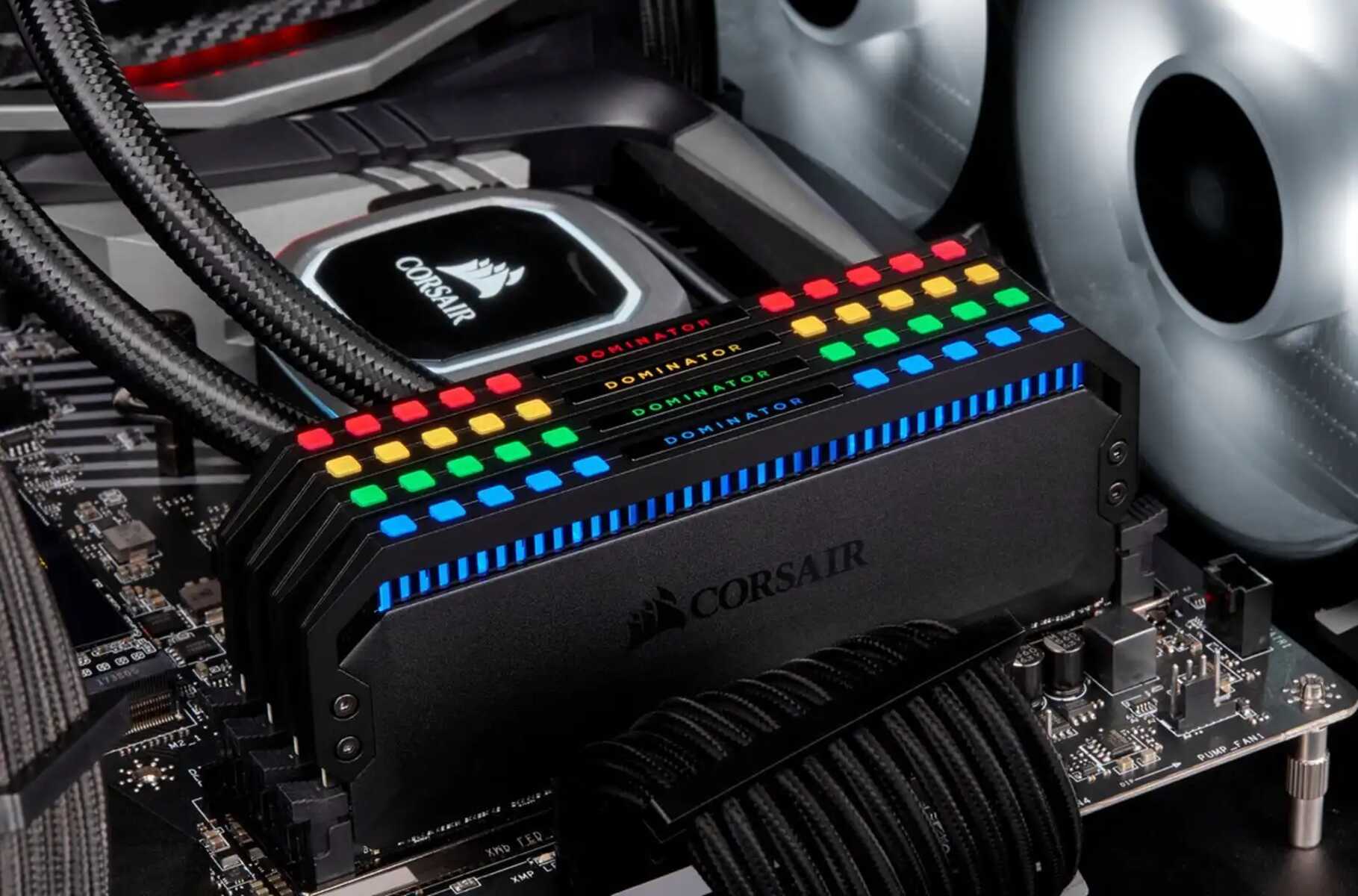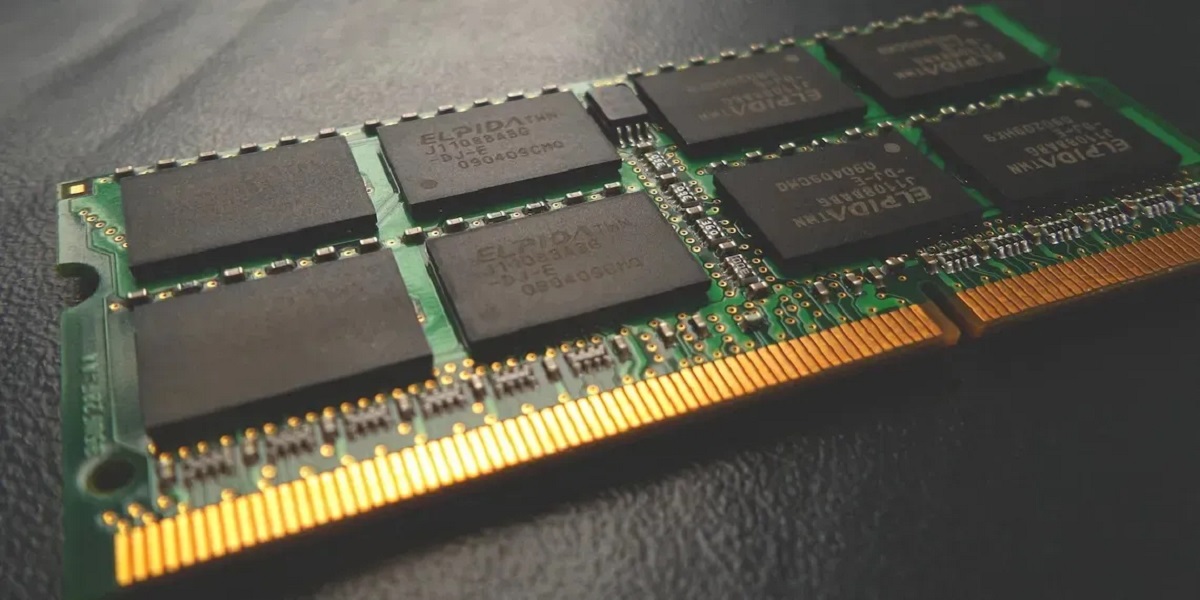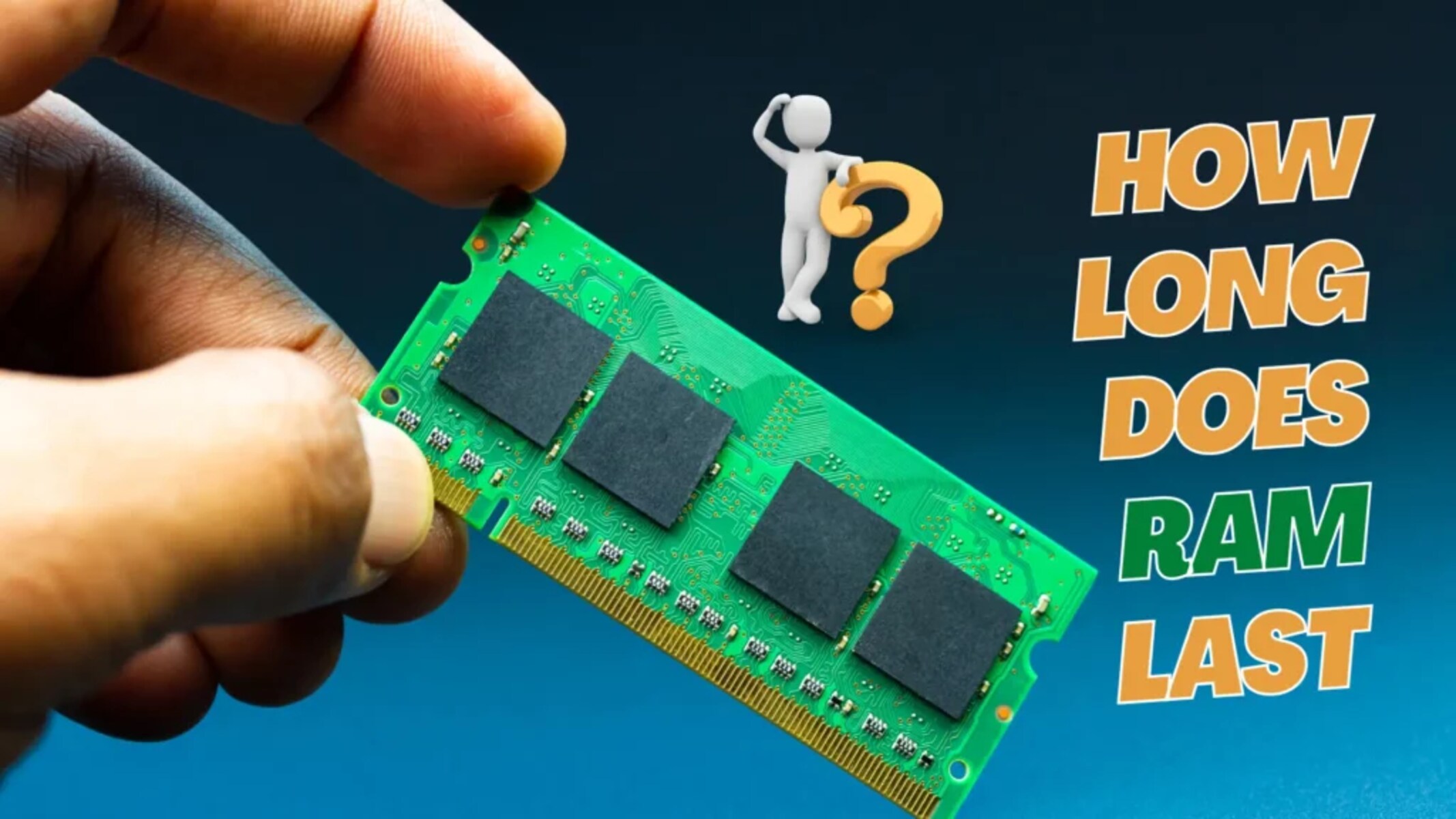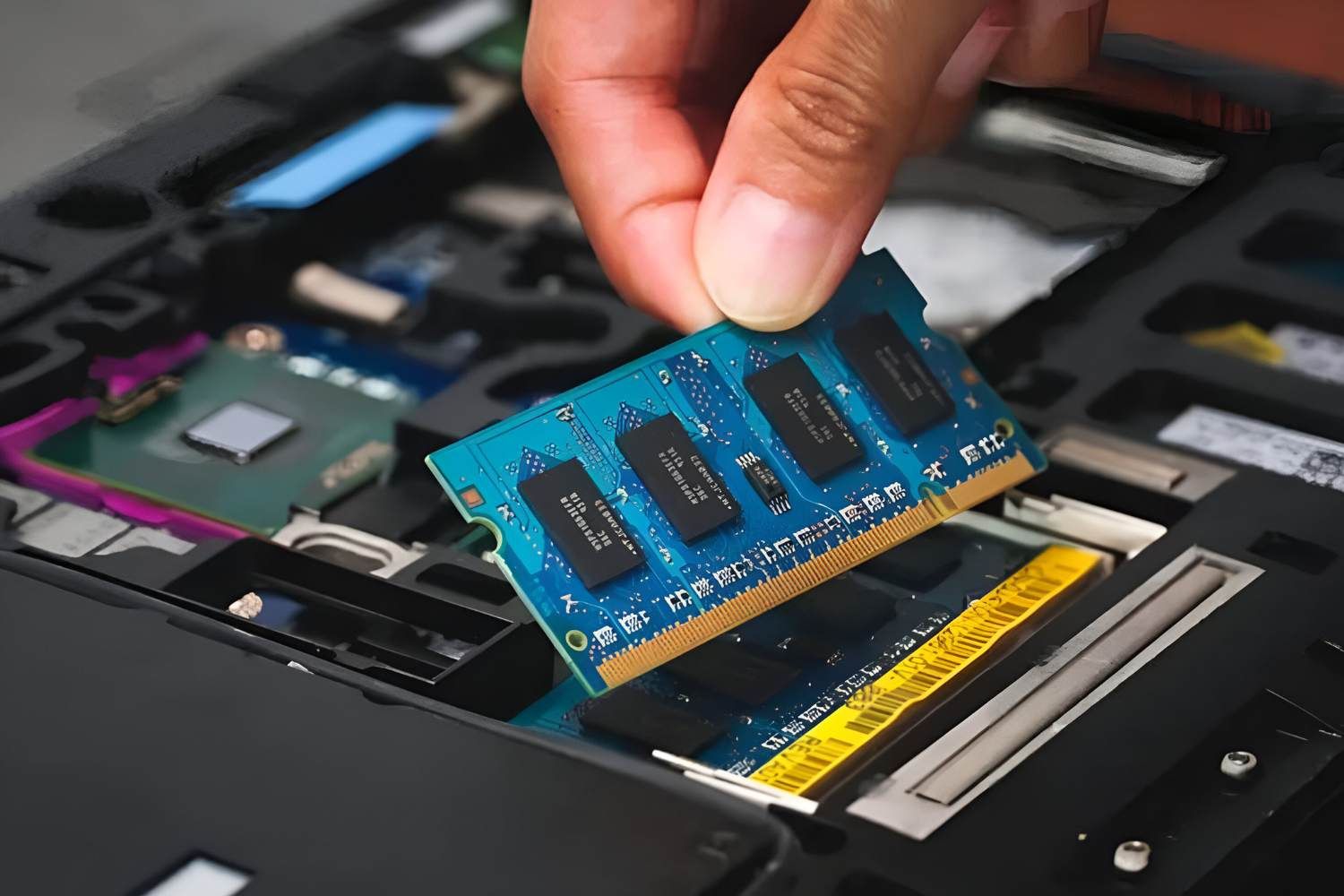Introduction
The performance of your computer can be greatly influenced by the amount and type of RAM (Random Access Memory) installed. RAM plays a crucial role in storing and accessing data that your computer needs to perform tasks efficiently. Over time, as technology advances and software becomes more resource-intensive, you may find that your computer is not running as smoothly as it used to. This is often a sign that it’s time to upgrade your RAM.
Upgrading your RAM can significantly enhance your computer’s speed, multitasking capabilities, and overall performance. However, before making any purchasing decisions, it’s essential to determine what RAM you currently have and what your computer’s requirements are. This article will guide you through the process of assessing your RAM needs and making an informed decision on an upgrade that suits your computing requirements.
In this guide, we will walk you through the steps necessary to determine the RAM that your computer requires. We will cover how to check your current RAM, understand RAM specifications such as type and speed, identify the number of RAM slots in your computer, assess the maximum RAM capacity your computer can handle, consider the RAM requirements of your operating system, and analyze your computing needs to decide on the amount of RAM to upgrade.
By the end of this article, you will have a clear understanding of how to tell what RAM you need and be equipped with the knowledge to confidently upgrade your computer’s RAM to improve its performance and ensure it meets your computing demands. So, let’s get started!
Reasons to Upgrade Your RAM
Upgrading your RAM can provide several benefits and improve your overall computing experience. Here are some compelling reasons to consider upgrading your RAM:
1. Improved Performance: Upgrading your RAM allows your computer to handle more tasks simultaneously. This can significantly enhance your computer’s speed and responsiveness, especially when running resource-intensive applications or multiple programs at once. With more RAM, your computer can access data faster, resulting in smoother performance.
2. Better Multitasking: If you often find yourself juggling multiple applications, web browsers, and documents simultaneously, upgrading your RAM can make multitasking more seamless. Your computer will have sufficient memory to handle the demands of different tasks without slowing down or freezing.
3. Enhanced Gaming Experience: Gamers, in particular, can benefit from a RAM upgrade. Many modern games require a significant amount of memory to run smoothly. By upgrading your RAM, you can reduce lag, increase frame rates, and overall improve the gaming experience.
4. Faster Software and Operating System: RAM plays a crucial role in the speed of your software and the operating system. With more RAM, software applications will load faster, and you’ll experience reduced delays when opening files or executing commands. Additionally, a RAM upgrade can lead to quicker boot times for your computer, allowing you to start working or gaming more quickly.
5. Future-Proofing: As technology advances, software applications and operating systems tend to become more resource-intensive. By upgrading your RAM now, you are future-proofing your computer, ensuring it can handle the demands of future software updates and newer versions of operating systems without slowing down.
6. Improved Virtualization: If you use virtual machine software to run multiple operating systems or simulate different environments, upgrading your RAM is crucial. More memory allows for smoother virtual machine performance and better overall system stability.
7. Increased Productivity: With faster and more efficient performance, you can accomplish tasks more quickly, resulting in increased productivity. Whether you’re working on complex design projects, editing videos, or running data-intensive applications, upgrading your RAM can help you work more efficiently.
When considering whether to upgrade your RAM, it’s important to weigh the benefits against the cost and compatibility with your computer’s hardware. By understanding the reasons to upgrade your RAM, you can make an informed decision based on your specific needs and budget.
Checking Your Current RAM
Before proceeding with a RAM upgrade, it’s important to determine the specifications and capacity of your current RAM modules. This will help you understand what type of RAM is compatible with your computer and how much you can upgrade. Here are the steps to check your current RAM:
1. Task Manager (Windows): On Windows systems, you can use the built-in Task Manager to check your current RAM. Simply right-click on the taskbar and select “Task Manager.” In the Task Manager window, navigate to the “Performance” tab and click on “Memory.” Here, you’ll find information about your installed RAM, including the total capacity and usage.
2. About This Mac (MacOS): If you’re using a Mac, you can find information about your RAM by clicking on the Apple menu and selecting “About This Mac.” In the Overview tab, click on “System Report,” and then navigate to the “Memory” section. Here, you’ll find details about your installed RAM, including the type and speed.
3. Manufacturer’s Website: If you’re unable to access your computer’s operating system or want more detailed information, you can visit the manufacturer’s website. Search for your computer’s model and find the specifications section. Look for details about the RAM, including the type, capacity, and maximum supported amount.
4. Physical Inspection: For desktop computers, you can physically inspect the RAM modules installed on your computer’s motherboard. Ensure that your computer is turned off and unplugged, then open the case. Locate the RAM modules, which are small rectangular circuit boards with chips on them. Take note of the RAM sticks‘ specifications, such as the capacity, type, and speed, which are usually printed on a label or etched onto the module.
By following these steps, you can gather the necessary information about your current RAM configuration. This information will be crucial in determining the appropriate RAM upgrade for your computer. Once you have the details, you can move on to understanding RAM specifications and selecting the right type and amount of RAM to meet your computing needs. Remember to consult your computer’s documentation or a trusted expert if you’re unsure about any aspects of checking your current RAM.
Understanding RAM Specifications
To choose the right RAM upgrade for your computer, it’s important to understand the various specifications associated with RAM modules. Here are the key specifications to consider:
1. Type of RAM: The type of RAM refers to the technology used in the memory modules. Common types include DDR3, DDR4, and the newer DDR5. It’s crucial to choose a RAM type that is compatible with your computer’s motherboard. You can usually find this information in your computer’s documentation or by checking the manufacturer’s website.
2. Speed of RAM: The speed of RAM, measured in MHz (megahertz), determines how quickly data can be read from or written to the memory modules. It’s essential to choose RAM with a speed that is supported by your computer’s motherboard. A higher RAM speed can result in faster data transfer, improving overall system performance.
3. Module Capacity: The module capacity refers to the amount of memory that each RAM stick can hold. RAM modules are available in various capacities, such as 4GB, 8GB, 16GB, and higher. Consider your computing needs and the maximum supported capacity of your motherboard when choosing the module capacity.
4. Number of Memory Channels: Some motherboards support dual-channel or quad-channel memory configurations. These configurations allow for faster data transfer between the RAM and the processor. If your motherboard supports multiple memory channels, it’s recommended to install RAM modules in pairs or sets to take advantage of this feature.
5. Timing (CAS Latency): The timing, often referred to as the CAS (Column Address Strobe) latency, represents the delay between the memory controller requesting data from the RAM and the data being delivered. Lower CAS latency values indicate faster response times. While timing is less critical than other RAM specifications, you can consider it for marginal performance improvements.
When selecting a RAM upgrade, ensure that the new modules are compatible with your motherboard in terms of type, speed, and capacity. It’s generally recommended to match the specifications of your existing RAM modules as closely as possible to ensure optimal performance and compatibility. However, if you plan to remove all the existing RAM modules and replace them with new ones, you have more flexibility in terms of choosing different specifications.
Remember, if you’re unsure about the compatibility or specifications of your RAM, referring to your computer’s documentation or seeking advice from a reputable source or computer technician can ensure you make the right choice. The next step is to determine the type and speed of your current RAM modules, which we’ll discuss in the following section.
Determining the Type and Speed of Your RAM
To determine the type and speed of your current RAM modules, you have a few options. Here’s how you can find this information:
1. Task Manager (Windows): In Windows, you can use the Task Manager to find basic information about your RAM. Right-click on the taskbar and select “Task Manager.” In the Task Manager window, navigate to the “Performance” tab and click on “Memory.” You will see details such as the total physical memory, memory speed, and memory slots used.
2. About This Mac (MacOS): On a Mac, you can find the type and speed of your RAM by clicking on the Apple menu and selecting “About This Mac.” In the Overview tab, click on “System Report,” and then navigate to the “Memory” section. Here, you’ll find details about your installed RAM, including the type and speed.
3. Manufacturer’s Website: If you have the model number of your computer or motherboard, you can visit the manufacturer’s website to find detailed specifications about your RAM. Look for the model of your computer or motherboard and locate the technical specifications section that includes information about the RAM type and maximum supported speed.
4. Physical Inspection: When all else fails, you can physically inspect your RAM modules to identify the type and speed. Open your computer’s case (if it’s a desktop), locate the RAM modules, and carefully remove one of them. Look for any labels or markings on the module that indicate the type (e.g., DDR3, DDR4) and the speed (e.g., 2400 MHz, 3200 MHz).
Once you have determined the type and speed of your current RAM, make a note of this information. It will be essential in selecting the appropriate RAM modules for your upgrade. Remember that when upgrading RAM, it’s generally recommended to match the new modules as closely as possible to the existing ones in terms of type and speed. However, if you are replacing all the modules, you have more flexibility in choosing different specifications.
In the next section, we will explore how to identify the number of RAM slots in your computer, which will help you understand how many additional RAM modules you can install for your upgrade.
Identifying the Number of RAM Slots
To determine the number of RAM slots available on your computer, you can use one of the following methods:
1. Task Manager (Windows): In Windows, you can utilize the Task Manager to find basic information about the number of RAM slots. Right-click on the taskbar and select “Task Manager.” In the Task Manager window, navigate to the “Performance” tab and click on “Memory.” You will see details such as the total memory slots available and the slots currently in use.
2. About This Mac (MacOS): On a Mac, the number of RAM slots can be found by clicking on the Apple menu and selecting “About This Mac.” In the Overview tab, click on “System Report,” and then navigate to the “Memory” section. Here, you’ll find details about the total number of memory slots available and the slots currently occupied.
3. Manual Inspection: For desktop computers, you can physically inspect the motherboard to identify the RAM slots. Ensure your computer is powered off and unplugged, then open the case. Locate the RAM slots, which are typically found near the CPU socket. Count the number of slots available. Note that some motherboard configurations may have RAM slots on both sides of the CPU socket.
4. Manufacturer’s Documentation: If you have access to the documentation or user manual of your computer or motherboard, it will provide detailed information about the number of RAM slots. Refer to the specifications section or consult the documentation online.
Knowing the number of RAM slots on your computer is crucial because it will determine how many additional RAM modules you can install for your upgrade. If all the slots are occupied, you will need to remove existing modules to make room for new ones. If additional slots are available, you can simply add new modules without removing any existing ones.
Keep in mind that some computer configurations may have a maximum limit on the total RAM capacity, regardless of the number of slots available. Review your computer’s documentation or manufacturer’s website to identify the maximum RAM capacity your system can support.
In the next section, we will discuss how to assess the maximum RAM capacity that your computer can handle, helping you determine the total amount of RAM you can upgrade to.
Assessing the Maximum RAM Capacity
To determine the maximum RAM capacity that your computer can handle, you can follow these steps:
1. Manufacturer’s Documentation: The most reliable source of information regarding your computer’s maximum RAM capacity is the manufacturer’s documentation. Look for the model number of your computer or motherboard and access the technical specifications section. Here, you should find the maximum supported RAM capacity listed.
2. System Information (Windows): On a Windows computer, you can use the System Information tool to find the maximum RAM capacity. Press the Windows key + R to open the Run dialog box, then type “msinfo32” and press Enter. In the System Information window, check the “Installed Physical Memory (RAM)” section. The “Total Physical Memory” value represents the maximum RAM capacity your system can handle.
3. About This Mac (MacOS): If you’re using a Mac, you can find the maximum RAM capacity by clicking on the Apple menu and selecting “About This Mac.” In the Overview tab, click on “System Report,” and then navigate to the “Memory” section. Look for the “Maximum Capacity” value, which represents the maximum RAM capacity supported by your Mac.
It’s important to note that the maximum RAM capacity may vary depending on factors such as the computer model, operating system limitations, and the BIOS (Basic Input/Output System) version. It’s highly recommended to consult the official documentation or the manufacturer’s website for the most accurate and up-to-date information.
Once you have determined the maximum RAM capacity, you should consider this information when deciding how much RAM to upgrade. For optimal performance, it’s best to utilize as much RAM as your system can support without exceeding its maximum capacity.
In the next section, we will discuss the RAM requirements of your operating system, which will help you determine the minimum RAM needed to meet your computing needs.
Considering the RAM Requirements of Your Operating System
Understanding the RAM requirements of your operating system is vital when determining the amount of RAM you need for optimal performance. Different operating systems have varying minimum and recommended RAM specifications. Here’s how you can consider the RAM requirements of your operating system:
1. Check the Official Documentation: The official documentation of your operating system, such as the Microsoft website for Windows or the Apple website for macOS, will provide information on the minimum and recommended RAM requirements. Look for the system requirements section relevant to your specific operating system version.
2. Operating System Settings: Within your operating system, there are settings where you can check the current RAM usage. On Windows, you can open the Task Manager (right-click on the taskbar and select “Task Manager”) and navigate to the “Performance” tab, then click on “Memory” to see the current RAM usage. On macOS, you can open the Activity Monitor (found in the “Utilities” folder within the “Applications” folder) and go to the “Memory” tab to view the RAM usage.
3. Consider Your Usage: Think about how you typically use your computer. If you frequently work with resource-intensive applications like video editing software or 3D modeling tools, you may want to allocate more RAM to ensure smooth performance. Similarly, if you frequently have multiple applications and browser tabs open simultaneously, additional RAM can help prevent slowdowns and improve multitasking capabilities.
While the operating system’s minimum requirements give you a baseline for the amount of RAM needed to run the system, it’s often advisable to exceed these requirements for optimal performance. Adding extra RAM beyond the minimum can enhance system responsiveness, speed up application launches, and improve overall multitasking.
It’s worth noting that newer versions of operating systems often have increased memory requirements compared to older versions. As software and applications continue to evolve, they tend to demand more resources to function optimally. Therefore, if you’re using an older operating system on your computer, it’s recommended to consider upgrading your RAM to meet the demands of newer applications and achieve a smoother computing experience.
By considering the RAM requirements of your operating system and evaluating your specific usage patterns, you can make an informed decision about how much RAM to add to your computer. In the following section, we will discuss how to analyze your computing needs further to determine the ideal amount of RAM to upgrade.
Analyzing Your Computing Needs
To determine the ideal amount of RAM to upgrade, it’s crucial to analyze your specific computing needs. Here are some factors to consider:
1. Type of Applications: Consider the type of applications you regularly use. If you often work with memory-intensive software like video editing tools, 3D modeling programs, or virtual machines, you will benefit from a higher amount of RAM. These applications require significant memory resources to function efficiently and prevent performance bottlenecks.
2. Multi-tasking Requirements: Evaluate your multi-tasking habits. If you frequently have multiple applications, web browsers, or documents open simultaneously, you will benefit from additional RAM. It allows your computer to handle multiple tasks smoothly without sluggishness or freezing.
3. Gaming: If you’re a gamer, take into account the system requirements of the games you play. Many modern games demand a substantial amount of RAM for optimal performance. Upgrading your RAM can help improve frame rates, reduce lag, and enhance overall gaming experience.
4. Data Analysis: Analyzing large datasets or running complex simulations often requires a significant amount of memory. If you work with data analysis tools, statistical software, or scientific applications, consider upgrading your RAM to ensure smooth and efficient data processing.
5. Future-Proofing: Think about your long-term computing needs. Investing in sufficient RAM now can help future-proof your system. As software and applications become more resource-intensive over time, having ample RAM will ensure your computer can handle the demands of future software updates and versions.
Additionally, consider any other specific tasks or usage patterns that require a significant amount of memory. For instance, if you often edit high-resolution photos, render videos, or work with large databases, more RAM can improve the speed and efficiency of these tasks.
It’s important to strike a balance when determining the amount of RAM to upgrade. While more RAM generally results in better performance, adding excessive amounts that go beyond your actual needs may not provide significant benefits. Consider your budget and the recommendations from your operating system and software developers to determine the sweet spot for your RAM upgrade.
By analyzing your computing needs, you can make an informed decision about the amount of RAM that will meet your requirements and improve your overall computing experience. In the next section, we will provide a step-by-step guide on how to upgrade your RAM.
Deciding on the Amount of RAM to Upgrade
After considering your computing needs and evaluating various factors, you are now ready to decide on the amount of RAM to upgrade. Here are the key factors to consider:
1. Operating System and Software Requirements: Take into account the minimum and recommended RAM specifications of your operating system and the software applications you frequently use. If you want to ensure smooth performance and optimal functionality, it’s advisable to exceed the minimum requirements.
2. Multi-Tasking and Workload: Consider your multitasking habits and the nature of your workload. If you frequently run multiple resource-intensive applications simultaneously or engage in tasks that require a significant amount of memory, a larger RAM upgrade will be beneficial.
3. Future Needs: Plan for the future. As software and applications continue to evolve and become more resource-intensive, having more RAM than you currently need can help future-proof your system. It allows for smoother performance when using newer software versions and prevents the need for frequent RAM upgrades in the near future.
4. Budget: Keep your budget in mind. RAM prices can vary depending on the capacity and type. While more RAM generally provides better performance, you should choose an upgrade that aligns with your budget and provides a noticeable improvement in your computing experience.
Once you have considered these factors, you can make an informed decision on the amount of RAM to upgrade. For most users, upgrading from 4GB or 8GB to 16GB or 32GB is a significant improvement in performance. However, if you work with highly demanding applications or engage in intensive tasks, you might benefit from larger upgrades, such as 64GB or even higher capacities.
Remember to check your computer’s documentation or manufacturer’s website to determine the maximum RAM capacity your system can handle. Ensure that the RAM modules you choose are compatible with your motherboard and take advantage of the available RAM slots for an optimal upgrade.
It’s also worth mentioning that if you’re unsure about the technical aspects or need assistance, consulting a trusted computer technician or knowledgeable professional can provide valuable guidance.
By carefully considering your needs, future requirements, and budget, you can confidently decide on the amount of RAM to upgrade. In the next section, we will provide a step-by-step guide on how to physically upgrade your RAM modules.
Upgrading Your RAM: Step-by-Step Guide
Once you have determined the amount of RAM you want to upgrade, follow this step-by-step guide to install the new RAM modules in your computer:
1. Turn off your computer and unplug it from the power source: This will ensure your safety and protect your computer from any potential damage during the installation process.
2. Open your computer case: If you have a desktop computer, remove the side panel or access panel to gain access to the internal components. Some cases may have screws holding the panel in place, so use a screwdriver if needed.
3. Locate the RAM slots: Identify the slots where your current RAM modules are installed. These slots are typically located near the CPU socket on the motherboard. Depending on your computer’s configuration, there may be two, four, or more slots.
4. Remove the existing RAM modules: Gently press the tabs on each side of the RAM module in an outward direction until it releases. Carefully remove the module from the slot by grabbing it from the sides. Set the old RAM modules aside in a safe place.
5. Prepare the new RAM modules: Ensure that the new RAM modules are compatible with your motherboard in terms of type, speed, and capacity. Check for any instructions or documentation that came with the new modules. Carefully unpack them, ensuring that you do not touch the gold connector pins.
6. Install the new RAM modules: Align the notch in the module’s connector with the slot’s key, then gently insert the module into the slot at a 45-degree angle. Firmly press down until the module clicks into place. Repeat this process for any additional RAM modules you are installing.
7. Close your computer case: Carefully put the side or access panel back onto your computer case. Make sure it is securely fastened with any screws provided.
8. Power on your computer: Plug your computer back into the power source and turn it on. The system should recognize the new RAM automatically. You can verify this by checking the memory amount displayed during the boot-up process or by referring to your operating system’s system information.
9. Check for proper installation: Once your computer has booted up, check the system information or Task Manager (on Windows) to ensure that the new RAM modules are detected and functioning correctly. Verify that the total installed memory matches your intended upgrade.
Congratulations! You have successfully upgraded your RAM modules. Your computer will now benefit from the increased memory capacity, which can result in improved performance and responsiveness. Enjoy faster application launches, smoother multitasking, and an overall enhanced computing experience.
If you encounter any issues during the installation process or your computer fails to recognize the new RAM modules, double-check that everything is properly seated and consult your computer’s documentation or a qualified technician for further assistance.
Troubleshooting Common Issues
While upgrading your RAM is a relatively straightforward process, you may encounter some common issues. Here are some troubleshooting tips to help you address these issues:
1. Incompatible RAM: Ensure that the new RAM modules you have purchased are compatible with your motherboard and meet the required specifications. Check for any mismatch in type, speed, or capacity. Consult your computer’s documentation or the manufacturer’s website for compatibility information.
2. Improper installation: Double-check that the RAM modules are seated correctly in their slots. Ensure they are firmly and evenly pressed all the way down until they click into place. If any modules appear loose or not fully inserted, remove and reinsert them carefully.
3. Insufficient power supply: If you have installed high-capacity RAM modules, it’s possible that your power supply may not be able to handle the increased load. Consider upgrading your power supply to provide sufficient power to all components.
4. BIOS configuration: In some cases, the BIOS may need to be updated or configured manually to recognize the new RAM modules. Consult your computer’s documentation or the motherboard manufacturer’s website for instructions on how to update or configure the BIOS.
5. Mixing incompatible RAM modules: Mixing different types or speeds of RAM modules may cause compatibility issues. It’s best to use identical RAM modules for optimal performance. Remove any incompatible modules and stick to matching pairs or sets for dual-channel or quad-channel configurations.
6. Faulty RAM modules: Sometimes, RAM modules may be defective or faulty. If you are experiencing issues after installation, try using each RAM module individually, testing them one at a time in each slot to identify any faulty modules. Contact the manufacturer for replacement or repair if necessary.
7. Overheating: Excessive heat can cause instability and impact RAM performance. Ensure that your computer’s cooling system is functioning properly. Clean out any dust from fans and heat sinks, and consider adding additional cooling if needed.
If you encounter persistent issues or are unsure about troubleshooting procedures, it’s recommended to seek assistance from a qualified technician or computer repair professional. They can provide expert advice and diagnose any underlying issues that may be affecting your RAM upgrade.
By troubleshooting these common issues, you can ensure a successful RAM upgrade and enjoy the improved performance and functionality it brings to your computer. Now that you are equipped with troubleshooting tips, you can confidently tackle any challenges that may arise.
Conclusion
Upgrading your RAM can significantly enhance your computer’s performance and improve your overall computing experience. By determining the RAM you currently have, understanding RAM specifications, assessing your computer’s limitations, considering the requirements of your operating system, and analyzing your computing needs, you can confidently decide on the amount of RAM to upgrade.
It’s important to check your computer’s documentation or the manufacturer’s website for accurate information about the maximum RAM capacity and compatibility. Additionally, troubleshooting common issues can help ensure a successful RAM upgrade.
With a new RAM upgrade, you can expect improved multitasking capabilities, faster software and operating system performance, smoother gaming experiences, and increased productivity. Whether you’re a professional requiring additional memory for resource-intensive applications or a casual user looking to enhance everyday computing, upgrading your RAM can make a significant difference.
Remember to follow the step-by-step guide for installing the new RAM modules and consult a professional if you encounter any difficulties.
By carefully assessing your needs, understanding the technical aspects, and making informed decisions, you can upgrade your RAM effectively and enjoy the benefits of a faster, more responsive computer system.
So, go ahead and give your computer the boost it deserves by upgrading your RAM, and unlock its full potential for optimal performance.

























